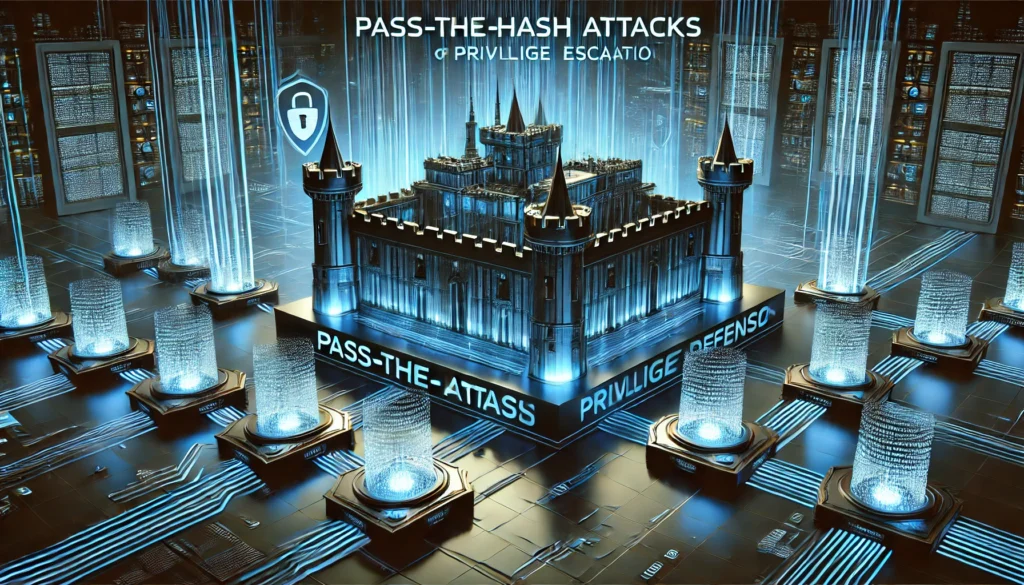
Preventing Pass-the-Hash Attacks with SILENT ASSASSIN: Securing Your Network Against Credential Theft
In today’s cybersecurity landscape, pass-the-hash (PtH) attacks present a serious threat to enterprise security, often targeting Domain Controllers (DC) to exploit system vulnerabilities. This advanced attack method allows cybercriminals to gain unauthorized access and escalate privileges by using password hashes rather than actual passwords. To protect your network, it’s essential to understand how pass-the-hash attacks work, how they target domain controllers, and what steps can prevent them.
Understanding Pass-the-Hash Attacks
A pass-the-hash attack is a type of credential-based attack where attackers leverage the hashed version of a password to gain access to systems rather than attempting to crack the password itself. By gaining access to hashed credentials on a compromised machine, attackers “pass” the hash to authenticate and access other systems within a network, often escalating to privileged accounts, like administrators on a Domain Controller.
How Pass-the-Hash Attacks Work
- Credential Theft: Attackers infiltrate a system, typically by compromising a device and accessing its memory to retrieve hashed credentials from processes like
lsass.exe. - Hash Replay: Using attack tools like Mimikatz or Metasploit, the attacker replays the hash, authenticating as the user without the original password.
- Privilege Escalation: Attackers leverage these credentials to access other systems or log onto the Domain Controller as an administrator, escalating privileges and gaining widespread access to sensitive systems.
Best Practices to Prevent Pass-the-Hash Attacks
1. Enforce Least Privilege Access
- Restrict administrative access to only those accounts that absolutely require it. Limiting high-level permissions reduces the number of privileged hashes that attackers could potentially steal.
2. Implement Credential Guard and LSA Protection
- On Windows systems, Credential Guard and Local Security Authority (LSA) Protection prevent credential hashes from being stored in memory, making it difficult for attackers to access them.
3. Restrict Lateral Movement Across the Network
- Use network segmentation and firewalls to control access between systems, limiting attackers’ ability to move laterally across the network and reducing the risk of wide-scale PtH exploitation.
4. Use Multi-Factor Authentication (MFA)
- Implement MFA for sensitive accounts, adding a second layer of authentication that makes it significantly more challenging for attackers to access critical systems even if they have a hash.
5. Monitor Domain Controllers Continuously
- Set up ongoing monitoring of Domain Controllers and critical systems to detect unusual access patterns, such as frequent or failed logon attempts.
6. Regularly Update and Patch Systems
- Regular updates are essential to avoid vulnerabilities that attackers exploit to access hashed credentials, ensuring that Windows security flaws, in particular, are patched.

How SILENT ASSASSIN Protects Against Pass-the-Hash Attacks
SILENT ASSASSIN is designed to protect networks against sophisticated attacks like PtH by combining proactive defence, detection, and recovery capabilities.
1. Endpoint Detection and Response (EDR)
- SILENT ASSASSIN’s EDR capabilities monitor endpoint activities continuously, identifying suspicious actions linked to credential theft attempts, like access to
lsass.exeor unusual process activity. - Automated Responses: SILENT ASSASSIN immediately isolates compromised endpoints if unauthorized behavior is detected, stopping hash access before it spreads.
2. Managed Extended Detection and Response (XDR)
- Managed XDR extends security monitoring across the entire IT infrastructure, analyzing endpoints, applications, and cloud resources. By recognizing unusual patterns, SILENT ASSASSIN identifies suspicious movements and access attempts on DCs, preventing the hash from being passed within the network.
3. Web Protection and DNS Filtering
- SILENT ASSASSIN’s Web Protection prevents users from visiting harmful sites that distribute credential-stealing malware, while DNS filtering blocks communication with command-and-control (C2) servers commonly used in PtH attacks.
4. Fortress Data Protection and Secure Backup
- SILENT ASSASSIN’s Fortress Data Protection solution offers secure data backup for critical systems. If a PtH attack compromises a system, administrators can restore the DC and essential data to an uncompromised state, ensuring continuity and data integrity.
5. Integrated SOC/SIEM Monitoring
- SILENT ASSASSIN’s SOC/SIEM integration provides comprehensive monitoring and logging, enabling the Security Operations Center to detect pass-the-hash attempts in real time. SOC/SIEM monitors for anomalies, such as unexpected access to DCs, and alerts security teams immediately.
6. Policy-Driven Access Control and Least Privilege Enforcement
- Through policy-driven controls, SILENT ASSASSIN enforces least privilege on all accounts, restricting administrative privileges to necessary personnel only and minimizing access to high-value systems and data.
- SILENT ASSASSIN’s integrated policy management system enables organizations to dynamically adjust access, ensuring minimum exposure of privileged hashes.
Conclusion
Pass-the-hash attacks are among the most effective tools in a cybercriminal’s arsenal, allowing attackers to bypass traditional authentication. However, with preventive steps like enforcing privilege limits, monitoring Domain Controllers, and leveraging SILENT ASSASSIN’s multi-layered security, organizations can limit exposure to pass-the-hash risks.
By implementing SILENT ASSASSIN, companies gain access to robust cybersecurity measures that include advanced threat detection, response automation, credential security, and compliance with security best practices, ensuring enterprise-grade protection against pass-the-hash attacks and safeguarding critical assets.
